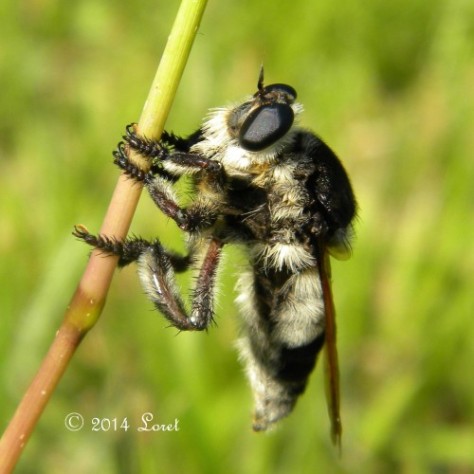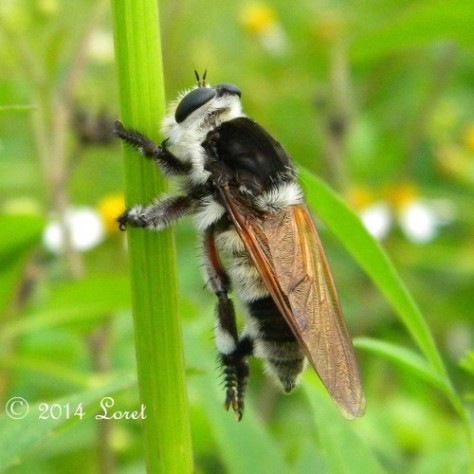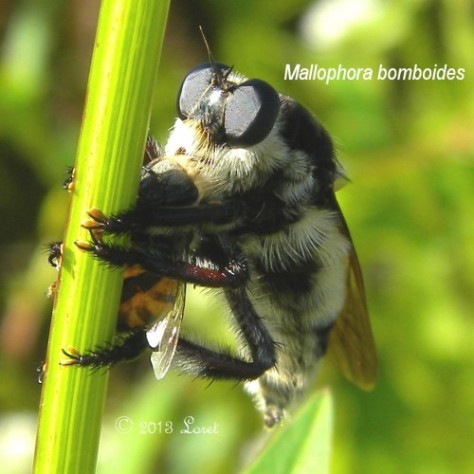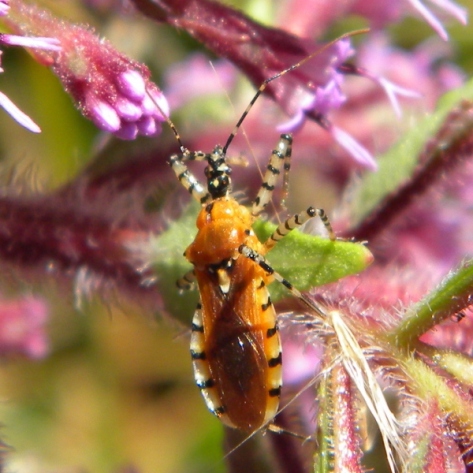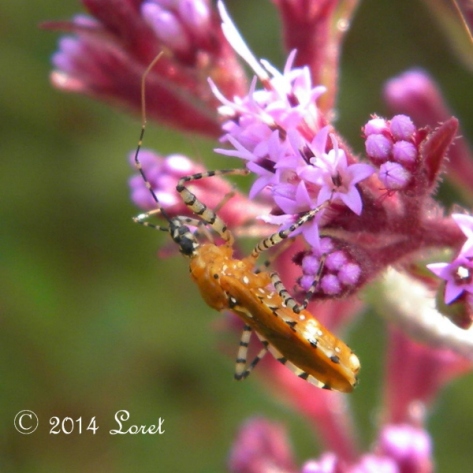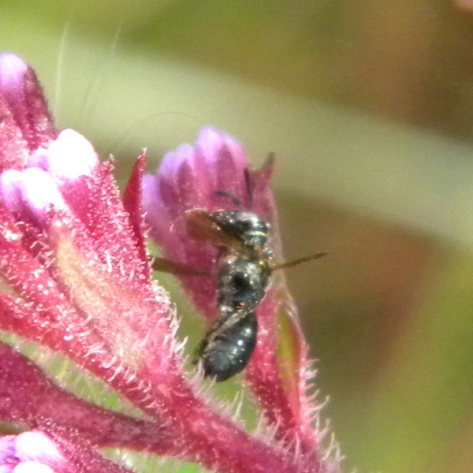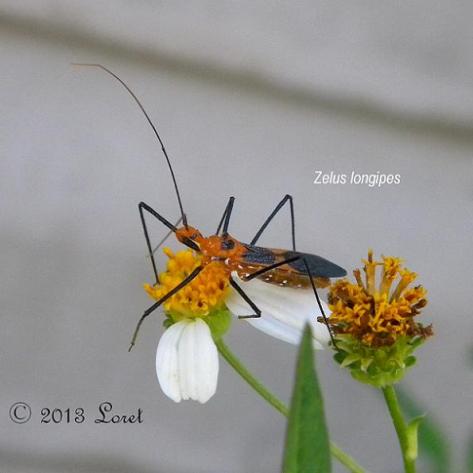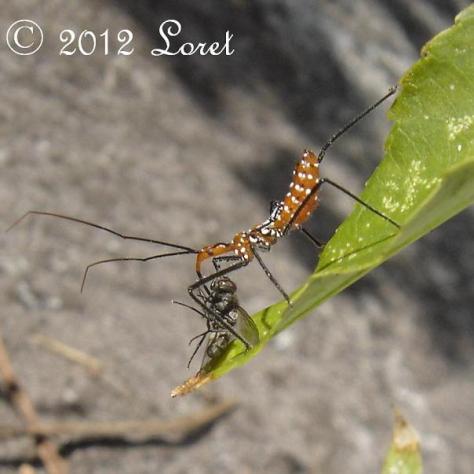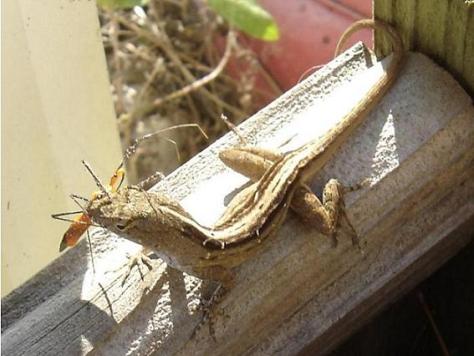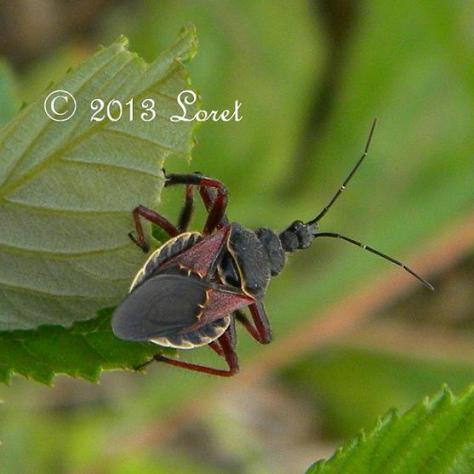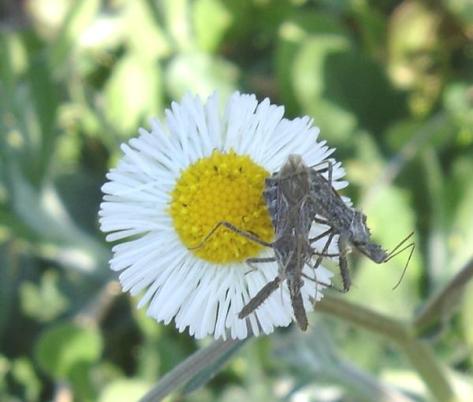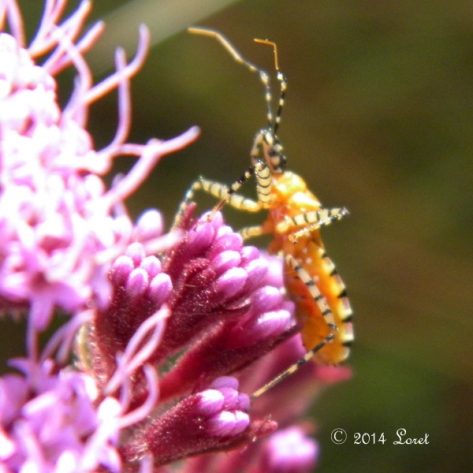I found my friend above when I was taking the chainsaw to some downed limbs left from Hurricane Irma in 2017. It’s starting to cool off in Florida. Perfect time to get the firewood ready for those two nights when it is cold enough to appreciate a warm fire.
It reminded me of the first time I encountered a flatworm…same scenario…dealing with the firewood. I decided I should dust off my old article to share what I learned about these critters.
This one wasn’t as robust as my previous finds…only about 2 inches long and extremely skinny (the magic of macro photography). It appeared to be munching away on a ghost ants’ nest. Beneficial in my book!
UPDATE 12/17/2018: Heard from a twitter expert located in France as follows:
So I can now correct my previous tale! Thank you Professor Jean-Lou Justine, ISYEB, MNHN [@Le_Museum], Paris
Dateline: January 27, 2012*

I was out gathering firewood two weeks back when Holopaw had its big two-hour freeze. Firewood piles always produce a most interesting assortment of critters which is why I always wear gloves…hey, there are widow spiders in them thar logs. I filled my planter tub to drag the logs to the door and decided to rearrange some remaining logs so they would dry out better. I grabbed one and placed it up top in the full sun. Looking down at the next layer, there was this interesting bright white worm with a black stripe, the likes of which I’d never seen before. Grabbing the camera, I clicked away. Upon examination of the photos, the mystery critter appeared to be munching on beetles.
Sitting down at my trusty computer I tapped away…”white worm black stripe” into the search engine over at bugguide.net. Hmmm, no results. OK, I guess you are not an insect. Off to Goodsearch…might as well earn a little cash for FNPS while I work. I try “white worm black stripe”. Many results but nothing seems decisive in the result headlines. I try AVG search “white slug black stripe Florida”. EUREKA! I see a listing with a headline “Detailed information on Hammerhead Worm”. Describes it perfectly.

My friend is a Land Planarian, specifically, a Mollusc-eating Hammerhead Worm (Bipalium vagum), a member of the Platyhelminthes Phylum that includes flatworms, tapeworms and flukes. They can grow to be 8-10 inches long.
I read further to discover some consider this family as beneficial predators who devour slugs, insect larvae and earthworms. Insect larvae?…good or bad, depending on species. Slugs? starting to sound like a keeper. Earthworms?…DRAT…not a good thing. Well, we all have our bad sides, so time to explore further. Since mine has been determined to be B. vagum and not B. kewense, I’m less concerned, as there are indications that it feeds exclusively on mollusks.
The Land Planarian is believed to be native to Indo-China. Ut oh, an alien in our midst. It doesn’t seem to have any predators apparently because of the icky secretions that it’s covered in and adhere to the ground as it moves along looking like a slug mucus trail. They need humidity and like dark, cool, moist areas under rocks, debris, or in my case firewood.

I won’t get into the workings of this critter in catching and devouring its prey. The technical terms made my head hurt. If they get into an earthworm-farming situation they can cause economic devastation, but in a small garden situation, well, most of what I read is that they don’t require control, as the populations remain small and they are harmless. On a good note, they are carnivorous so eventually eat each other. Self-IPM, I like that!
Thus, my recommendations: if you are an earthworm farmer, get rid of these guys, but don’t rely on cutting them up to destroy them. Reproduction of Land Planarians is principally by fragmentation so a part you leave may just suddenly crawl away as a new flatworm. I suppose drying them out would work and I always have deadly results from freezing various exotic invasives.

If you are just a typical wildlife gardener such as myself, they are not toxic, so rather harmless. And hey, it was an interesting find that it was stalking slugs and eating beetles that might have traveled in with the logs for the fireplace. I hate beetles in the house, so Mr. Hammerhead gets to live at my place. That, and when I went back to the woodpile it was no where to be found.
*This tale was originally published by Loret T. Setters on January 27, 2012 at the defunct national blog beautifulwildlifegarden[dot]com. Click the date to view reader comments. Updated December 17, 2018 to correct the species identification.

















 With regard to snails in general:
With regard to snails in general:



